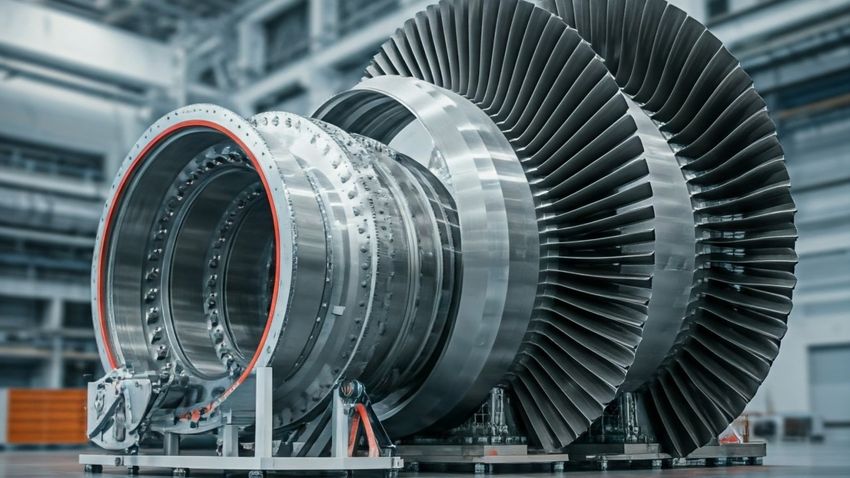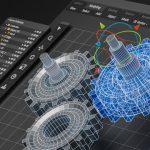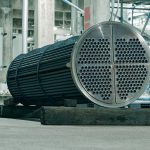Introduction 🌱
Turbomachinery plays a critical role in modern aerospace and power generation industries, enabling the propulsion of aircraft and the production of electricity with high efficiency. From jet engines to steam and gas turbines, advancements in design, materials, and digital technologies are driving improvements in performance, reliability, and sustainability. This article explores the latest innovations in turbomachinery and their impact on aerospace propulsion and energy generation.
What Is Turbomachinery? 🤔
Turbomachinery refers to mechanical devices that transfer energy between a fluid and a rotating component. These machines typically involve compressors, turbines, and fans, which are essential for generating thrust in aircraft engines and producing electricity in power plants. Turbomachinery is classified into two main categories:
- Compressors 💨: Increase the pressure of air or gas by reducing its volume.
- Turbines 🌀: Extract energy from high-pressure gases or steam to generate rotational power.
Key components of turbomachinery include:
- Rotors ⚙️: Rotating parts that transfer energy to or from the fluid.
- Stators 🧩: Stationary blades that guide the flow of fluid and improve efficiency.
- Bearings 🛠️: Support the rotor and reduce friction.
- Casing 🏗️: Encloses the components and maintains structural integrity.
Advancements in Aerospace Turbomachinery ✈️
Modern aerospace engines rely on advanced turbomachinery to achieve higher thrust, fuel efficiency, and environmental performance. Recent innovations include:
1. High-Bypass Turbofan Engines 🌍
- High-bypass turbofan engines, such as the Rolls-Royce Trent XWB and Pratt & Whitney PW1000G, feature larger fans that move more air around the engine core, improving fuel efficiency and reducing noise.
- These engines are used in commercial aircraft like the Airbus A350 and Boeing 787, offering significant fuel savings and lower emissions.
2. Lightweight Materials and Advanced Manufacturing 🧪
- The use of lightweight materials such as titanium alloys, carbon composites, and ceramic matrix composites (CMCs) reduces engine weight, improving fuel efficiency and payload capacity.
- Additive manufacturing (3D printing) enables the production of complex components with reduced material waste and faster development cycles.
3. Advanced Cooling and Thermal Management ❄️
- New cooling techniques, such as film cooling and transpiration cooling, allow turbine blades to withstand higher temperatures, improving engine efficiency.
- Thermal barrier coatings (TBCs) protect components from extreme heat, extending engine life and reducing maintenance costs.
4. Digital Twin Technology 💻
- Digital twins are virtual models of physical engines that enable real-time monitoring and predictive maintenance.
- By analyzing data from sensors embedded in the engine, digital twins can identify potential issues before they cause failures, reducing downtime and maintenance costs.
5. Hybrid and Electric Propulsion 🔋
- Hybrid-electric and all-electric propulsion systems are being developed to reduce carbon emissions and noise.
- Projects like the Airbus E-Fan X and NASA’s X-57 Maxwell demonstrate the potential of electric propulsion for regional and urban air mobility.
Advancements in Power Generation Turbomachinery ⚡
In the power generation sector, advancements in gas and steam turbines are driving improvements in efficiency, reliability, and sustainability:
1. Combined Cycle Power Plants ♻️
- Combined cycle power plants integrate gas turbines with steam turbines to maximize energy extraction from fuel.
- Modern combined cycle plants, such as GE’s HA-class turbines, achieve thermal efficiencies of over 60%, reducing fuel consumption and carbon emissions.
2. Supercritical and Ultra-Supercritical Steam Turbines 💧
- Supercritical and ultra-supercritical steam turbines operate at higher temperatures and pressures, increasing efficiency and reducing greenhouse gas emissions.
- These technologies are used in advanced coal and natural gas power plants, such as the Jōhoku Power Station in Japan and the Taichung Power Plant in Taiwan.
3. Advanced Materials and Coatings 🧪
- The use of nickel-based superalloys, CMCs, and advanced coatings enhances turbine performance and durability.
- These materials can withstand higher temperatures, reducing cooling requirements and improving efficiency.
4. Digital Control Systems 💻
- Advanced control systems optimize turbine performance, reduce emissions, and improve reliability.
- Sensors and AI-powered analytics enable real-time monitoring, predictive maintenance, and automated adjustments for optimal efficiency.
5. Renewable Energy Integration 🌱
- Turbomachinery is increasingly integrated with renewable energy sources, such as wind and solar power, to create hybrid power systems.
- Gas turbines provide flexible backup power, ensuring grid stability when renewable energy output fluctuates.
Key Technologies Driving Innovation 💡
1. Computational Fluid Dynamics (CFD) 💨
- CFD simulations allow engineers to analyze fluid flow, heat transfer, and aerodynamic performance within turbomachinery components.
- By optimizing blade shapes and flow paths, CFD improves efficiency, reduces energy losses, and enhances overall performance.
2. Finite Element Analysis (FEA) 🧩
- FEA simulations predict mechanical stress, vibration, and thermal deformation in turbine components.
- This technology ensures that components can withstand high temperatures and rotational forces, improving reliability and extending service life.
3. Additive Manufacturing (3D Printing) 🖨️
- 3D printing enables the production of complex components with internal cooling channels and lightweight structures.
- This technology reduces lead times, material waste, and manufacturing costs, accelerating the development of new turbine designs.
4. Artificial Intelligence (AI) and Machine Learning 🤖
- AI algorithms analyze operational data from sensors to optimize performance, detect anomalies, and predict maintenance needs.
- Machine learning models can simulate complex scenarios, enabling engineers to refine designs and improve efficiency.
5. Internet of Things (IoT) 🌐
- IoT sensors embedded in turbomachinery provide real-time data on temperature, pressure, vibration, and wear.
- This data is transmitted to cloud-based platforms, allowing operators to monitor performance, identify issues, and schedule maintenance proactively.
Challenges and Solutions in Modern Turbomachinery ⚠️
1. Thermal Stress and High Temperatures 🌡️
- Challenge: Turbomachinery operates at extremely high temperatures, causing thermal stress and material degradation.
- Solution: Advanced cooling techniques, thermal barrier coatings, and heat-resistant materials extend component life and maintain efficiency.
2. Vibration and Fatigue 💥
- Challenge: Rotating components experience high centrifugal forces, leading to vibration and fatigue.
- Solution: Precision balancing, robust bearing systems, and FEA simulations minimize vibration and prevent premature failure.
3. Environmental Regulations 🌍
- Challenge: Stricter emissions regulations require lower fuel consumption and reduced greenhouse gas emissions.
- Solution: Higher efficiency turbines, hybrid-electric propulsion, and renewable energy integration help meet environmental targets.
4. Maintenance and Downtime 🛠️
- Challenge: Unexpected failures and maintenance downtime increase operational costs.
- Solution: Predictive maintenance using digital twins, IoT sensors, and AI analytics reduces unplanned downtime and extends component life.
Real-World Applications of Advanced Turbomachinery 🌍
Aerospace Industry ✈️
- Rolls-Royce Trent XWB: Powers the Airbus A350, offering improved fuel efficiency and lower emissions.
- GE9X Engine: Powers the Boeing 777X, featuring lightweight composite fan blades and higher bypass ratios for greater efficiency.
- Pratt & Whitney PW1000G: Used in Airbus A320neo and Bombardier C Series, reducing fuel consumption and noise through geared turbofan technology.
Power Generation Industry ⚡
- GE HA-Class Gas Turbines: Achieve record-breaking efficiency in combined cycle power plants, reducing fuel consumption and emissions.
- Siemens SGT-800 Gas Turbine: Provides flexible, low-emission power generation for industrial and utility applications.
- Mitsubishi J-Series Gas Turbines: Deliver high efficiency and reliability, supporting the transition to cleaner energy sources.
Sustainability and Environmental Impact 🌱
Advancements in turbomachinery are driving sustainability by reducing fuel consumption, lowering emissions, and enabling the use of alternative fuels:
- Hydrogen Combustion: Gas turbines capable of burning hydrogen offer zero-carbon energy generation.
- Biofuels and Synthetic Fuels: Sustainable aviation fuels (SAFs) reduce carbon emissions without modifying existing aircraft engines.
- Waste Heat Recovery: Combined heat and power (CHP) systems capture waste heat from turbines, improving overall energy efficiency.
Future Trends in Turbomachinery 🚀
The future of turbomachinery will be shaped by technological innovation, environmental regulations, and the transition to renewable energy:
- Hybrid-Electric and All-Electric Propulsion: Reducing carbon emissions and noise in aviation.
- Hydrogen-Powered Turbines: Enabling zero-emission power generation and aircraft propulsion.
- Digital Twins and AI Optimization: Enhancing performance, reliability, and predictive maintenance.
- Advanced Materials and Manufacturing: Improving efficiency, durability, and sustainability.
- Decentralized Power Generation: Using small, modular gas turbines to support distributed energy systems.
Conclusion 🌟
Advances in turbomachinery are driving significant improvements in both aerospace propulsion and power generation. With innovations in materials, design, and digital technologies, modern turbines are more efficient, reliable, and environmentally friendly than ever before. As the aerospace industry moves toward hybrid-electric propulsion and the power generation sector integrates renewable energy, turbomachinery will play a crucial role in achieving sustainability goals. By leveraging technologies like digital twins, additive manufacturing, and AI optimization, engineers are pushing the boundaries of performance, ensuring that turbomachinery remains at the forefront of technological progress.


